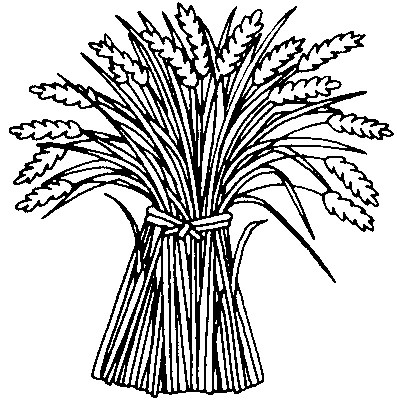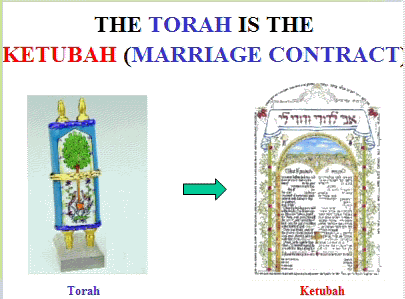

|
Shavuot in the Tenakh (Exodus 19) |
Shavuot in the Brit Hadashah (Jeremiah 31:31-33) |
|
50th day |
50th day (Acts 21-11; Hebrews 12:18-190 |
|
Commandments of Hashem written on tables of stone (Exodus 24:12) |
Commandments of Hashem written on our hearts (Jeremiah 31:33; Psalms 40:8; 37:31; Isa 51:7 2 Cor 3:3 Hebrews 8:10) |
|
Written by the finger of Hashem (Exodus 31:8) |
Written by the Spirit of Hashem (2 Cor 3:3; Heb 8:10) |
|
3,000 slain (Exodus 32:1-8, 26-28) |
3,000 live (Acts 2:38-41) |
|
The letter of the Torah |
The Spirit of the Torah (Romans 2:29; 7:6; 2 Cor 3:6) |
|
Mount Sinai (Exodus 19:11) |
Mount Tzion (Romans 11:26; Heb 12:22; 1 Peter 2:6) |
One of the most beautiful images of Shavuot is that of the marriage between Hashem (the groom) and Israel (the bride).
In the biblical wedding service that Hashem gave (Romans 9:4; Hebrews 9:1; 1 Chronicles 28:11-12), marriage consisted of two stages:

The Wedding proposal
19:3 And Mosheh went up to Elohim, and YHWH (יהוה) called to him out of the mountain, saying:
Thus shall you say to the beit Yaakov, and tell the Benai Yisrael;
19:5 Now therefore, if you will obey My Kol indeed, and keep MY Brit, then you shall be a peculiar treasure to Me above all people: for all the earth [is] Mine:
In Exodus 19:8, Yisrael accepts Hashem's marriage proposal. Israel answered in Exodus 19:8, "All that the Lord has spoken we will do" (Na'aseh v' Nishmah - we agree to do even before we have listened).

The biblical wedding ceremony that Hashem gave requires that the marriage be consummated under a wedding canopy known as a Chuppah.
In Exodus 19:17, Moshe brought forth the people out of the camp to meet Hashem and they stood at the nether part of the Mount.
The nether part (Hebrew תּחתּיtakhti ):- lower, lowest: - beneath (3), depths (3), foot (1), lower (4), lower parts (3), lowest (2), lowest part (1), lowest parts (1), nether (1).
This imagery gives the understanding that the mountain had become a chuppah and Israel was standing underneath the mountain or under the chupah the place where the wedding takes place.
Messiah Yeshua is the groom and the believers in the Messiah are betrothed to Him. This means that whosoever (both Jews and Non-Jews) would put their trust and faith (emunah) in Yeshua would be wedded to Him forever.
In Exodus 19:19, a trumpet (shofar) was sounded. The Trumpet (shofar) that was sounded grew louder and louder. Exodus (Shemot) 19:19 says, "... and Hashem answered him with thunder [by a voice, KJV] Exodus (shemot) 20:18 says, "And all the people perceived the thunder [was the thunderings, KJV]..."
What happened at Mount Sinai occurred 50 days after the resurrection of Yeshua on the day of Shavuot (Pentecost) Acts 2:1-11.
At this Shavuot, the people also were as ONE (Acts 2:1-2, Exodus 19:2). When Hashem poured out His Holy Spirit (Ruach HaKodesh) at this time , once again people began to speak in the different languages of the world (Acts 2:1-11).

Shavuot speaks of the birth of Israel as a nation, as well as the congregation (kehilat) of believers in Yeshua through the Holy Spirit (Ruach HaKodesh).

The two loaves of bread speaks of Israel and the congregation of believers in the Messiah.